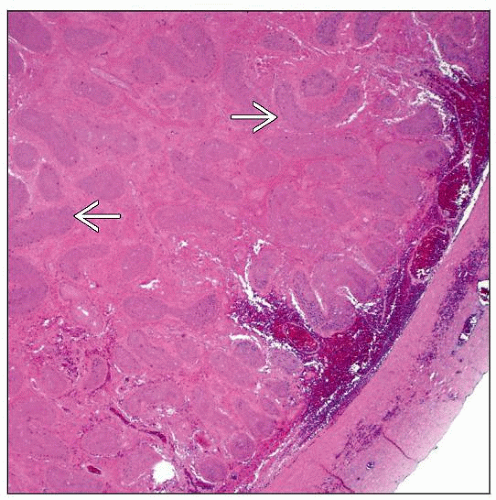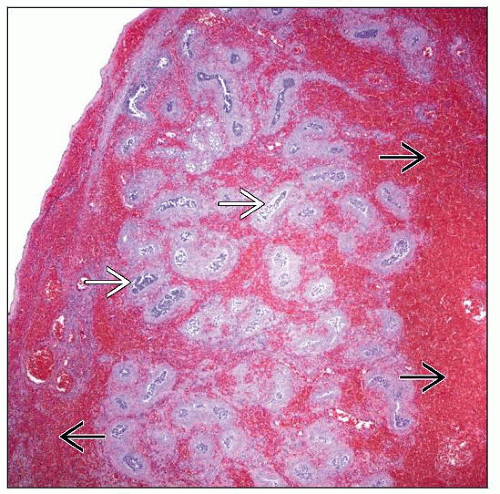Testicular Torsion
Jessica M. Comstock, MD
Key Facts
Etiology/Pathogenesis
Intravaginal torsion (torsion of testis within tunica vaginalis)
Predisposed by bell-clapper deformity, puberty, and cryptorchidism
Extravaginal torsion (torsion of testis, tunica vaginalis, and gubernaculum)
Associated with large-for-gestation infants, difficult labor, and breech presentation
Clinical Issues
Intravaginal: Most common in adolescence but can happen at any age
Extravaginal: 70% prenatal, 30% postnatal
Microscopic Pathology
< 6 hours after torsion: Venous congestion and interstitial edema with variable hemorrhage
> 24 hours after torsion: Diffuse hemorrhagic necrosis
TERMINOLOGY
Definitions
An acute vascular event where spermatic cord is twisted on its axis impeding blood flow to and from testis
ETIOLOGY/PATHOGENESIS
Developmental Anomaly
Intravaginal torsion (torsion of testis within tunica vaginalis)
Bell clapper deformity present in 12% of all males
High insertion of tunica vaginalis on spermatic cord results in testis not being fixed to posterior scrotal wall
Testicular growth during puberty can predispose to torsion
Cryptorchidism also predisposes to torsion
Far more common than extravaginal torsion
Extravaginal torsion (torsion of testis, tunica vaginalis, and gubernaculum)
Stay updated, free articles. Join our Telegram channel

Full access? Get Clinical Tree







